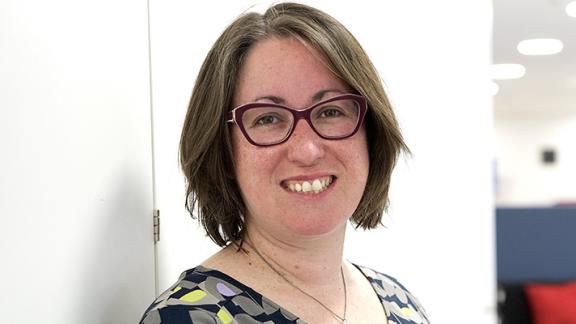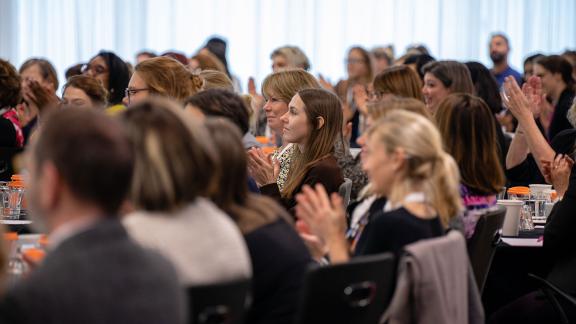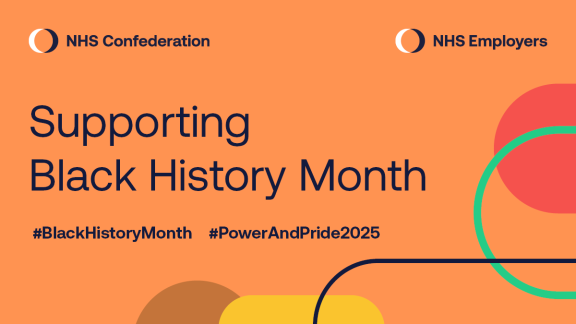The power of international leadership networks for women

Women’s leadership networks provide an environment where professional women can share experiences, build professional relationships, identify systemic challenges and support one another. These networks are proliferating across the globe, but what could international approaches teach the NHS? Dr Layla McCay explores.
They say there is strength in numbers. If that’s true, with the growing number of leadership networks for women across the world, women’s leadership of health and care systems should be incredibly strong. After all, close to 80 per cent of the health and care workforce is female.
Yet despite this, women continue to represent less than a third of the most senior positions at board level. This unequal balance of power among the most senior positions in the health and care sector is one of the many challenges that unite the health systems of the world.
It also explains why women’s leadership networks continue to proliferate across the world. As they do, they are increasingly using a number of often innovative methods to increase their reach and impact. With any challenge this complex, it’s obvious that there is no single route to achieving meaningful change. But these networks, in their various forms, are a crucial part of achieving this goal. This blog explores just a few international approaches that might be of interest to the NHS.
Bringing people together
Women’s leadership networks provide an environment where professional women can share their experiences, build professional relationships, identify systemic challenges and support one another. Their ultimate intention is to ensure that those that wish to undertake senior leadership roles are not limited as a result of unequal barriers.
Across most industries, the ability to build a high-quality professional network is recognised to help people secure increasingly senior positions. However, despite the role that networks are playing in bringing people together, networking isn’t a skill that comes equally or naturally to all in the wider professional environment.
This is certainly a viewpoint shared by Modern Healthcare, the American magazine for healthcare executives, which runs an interactive workshop at its annual conference. The session provides delegates with the chance to learn various strategies and practical approaches to networking. It also aims to arm delegates with a personalised action plan they can take with them outside of their immediate network. This helps to increase their chance to engage meaningfully with those that can support their professional advancement, and ensure that they don’t miss out on opportunities.
Some of the most influential individuals with whom to connect are women who have been able to overcome barriers to achieve some of the most senior positions over the course of their careers. Formal networks can help support women connect with these professionals and learn from their experiences. They can also be particularly helpful for people in the earlier stages of their own careers, or who haven’t been able to make it further up the career ladder despite a desire to do so. From speaking at conferences, to early-career professional sessions, to formal mentorship programmes and fellowships, approaches to supporting women to build their networks can vary substantially.
Building links
One such approach is the Japanese Women’s Leadership Initiative. Founded in 2006, it has sought to build links between professionals in Japan and Boston, Massachusetts. It does this through fellowships that involve successful applicants spending four weeks working at a social enterprise in Boston with the intention of developing leadership skills that can be taken back and applied in Japan.
To celebrate their tenth anniversary, they held a summit in Tokyo, attended by women leaders and previous exchange fellows. It not only gave the opportunity to discuss the ongoing challenges to women’s leadership, but also showcased the achievements of previous fellows.
Overcoming challenges
Networks have also been used internationally to support women to overcome out-of-work challenges that may disproportionately affect their career progression; for example, the unequal responsibility that some women face in managing domestic responsibilities on top of their professional responsibilities. The effect this has on seeking and securing more senior positions is well documented.
Many women’s leadership networks around the world recognise this challenge. In response, during their annual Women in Healthcare leadership summit, the Australian Healthcare & Hospitals Association run workshops that can help women aspiring to be leaders to manage this challenging balance. Not only do the sessions support women with practical methods for managing this persistent imbalance, they also seek to challenge the misplaced notion that out-of-work commitments should be legitimate reasons that women shouldn’t undertake leadership positions at all.
The opportunity to highlight the achievements of their members is another route many networks use to overcome misconceptions about what women can and can’t achieve during their career. For instance, the Southern Californian Women in Health Administration hold regular recognition events throughout the year to celebrate the achievements of their members, from all levels of the profession. From a Member of the Year gala, to scholarship presentations and individual member achievement, these activities aim to elevate and inspire each other, giving visibility to these achievements.
Levelling the playing field
However, we all know that the challenges that keep women from achieving the highest levels of seniority are complex, systemic and also require the support of those in the most influential positions. Many of the men that hold these positions increasingly see a responsibility to level the playing field and use their current influence to support female colleagues reach senior leadership positions.
As one example, the Israeli Ministry of Health marked International Women’s Day by holding an event between the first cohort of graduates of their clinical leaders’ programme and the country’s president, Reuven Rivlin. Liron Zohar, gender equality consultant to the chief executive of the Ministry of Health, saw this as an opportunity to change the organisational environment, at the same time as building a network of change agents from the programme’s graduates.
These snapshots demonstrate various approaches by women’s leadership networks in health and care around the world that could be drawn upon. One thing that is apparent is that there is no single way to most effectively use the collective voice that networks offer.
The Health & Care Women Leaders Network is part of global efforts to address a pervasive challenge: to close the gender inequality gap and support women to reach leadership positions in health and care. As it develops, looking at what’s working in other countries will help ensure that we are meeting this challenge with the most innovative and effective of approaches.
Dr Layla McCay is director of international relations at the NHS Confederation. Follow her and the organisation on Twitter @LaylaMcCay and @nhsconfed



